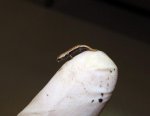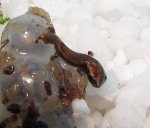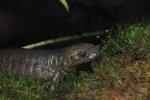Jay Redbond
New member
Hello All,
I would just like to point out that I am fascinated by Bolitoglossa andother Caudata, because of my main interest towards tailed amphibians the institution I work for, Slimbridge WWT has a large collection.
Bolitoglossa dofleini are a specie that I one day would like to work with from a conservation point of view for in-situ and ex-situ breeding and possible future reintroductions. I have been out to Belize and established good relationships with scientist studying other fauna out there. I hope to plan a revisit to Belize in the future to setup some field studies on this species so I can learn more about their natural history. Then potentially if possible get a permit to collect a few, which would be treated and exported, these animals would be used to develop husbandry guidelines.
I have been planning this for some time however raising money for these sorts of projects can be challenging, but I promise that I will try to setup something to try and safeguard this species from extinction in the wild.
Any help or information that can help setting up the project would be greatly received.
Kind Regards
Jay
I would just like to point out that I am fascinated by Bolitoglossa andother Caudata, because of my main interest towards tailed amphibians the institution I work for, Slimbridge WWT has a large collection.
Bolitoglossa dofleini are a specie that I one day would like to work with from a conservation point of view for in-situ and ex-situ breeding and possible future reintroductions. I have been out to Belize and established good relationships with scientist studying other fauna out there. I hope to plan a revisit to Belize in the future to setup some field studies on this species so I can learn more about their natural history. Then potentially if possible get a permit to collect a few, which would be treated and exported, these animals would be used to develop husbandry guidelines.
I have been planning this for some time however raising money for these sorts of projects can be challenging, but I promise that I will try to setup something to try and safeguard this species from extinction in the wild.
Any help or information that can help setting up the project would be greatly received.
Kind Regards
Jay



